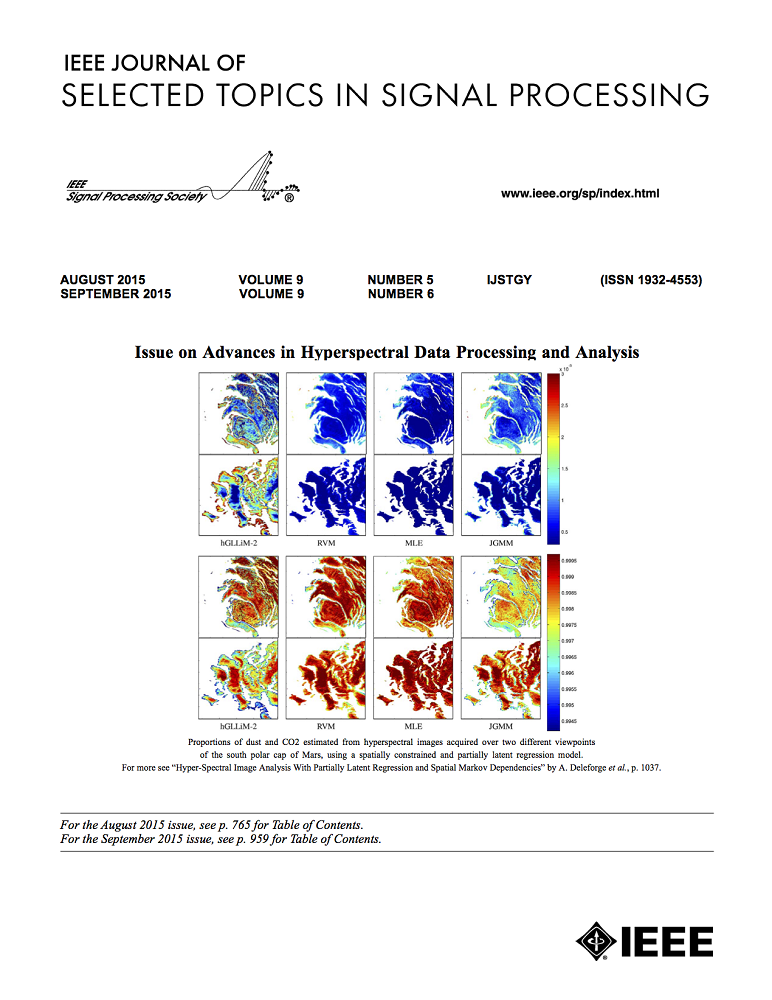车辆到基础设施网络中端到端预测波束形成设计的集成传感与通信
IF 8.7
1区 工程技术
Q1 ENGINEERING, ELECTRICAL & ELECTRONIC
IEEE Journal of Selected Topics in Signal Processing
Pub Date : 2024-10-03
DOI:10.1109/JSTSP.2024.3474254
引用次数: 0
摘要
集成传感和通信(ISAC)已成为车辆到基础设施(V2I)网络中预测波束形成的一种有前途的技术。ISAC现有的大部分工作都假设每辆车配备一个天线,并使用两相方案进行预测波束形成设计。在第一阶段,利用路边单元(RSU)反射的传感信号估计车辆的状态参数(如角度、通道状态信息(CSI))。在第二阶段,根据估计的状态参数对波束形成器进行预测。两相方案的缺点是,第一阶段的估计误差会影响第二阶段的波束形成器设计,并可能导致可实现速率的降低。在这项工作中,我们通过使用深度学习以端到端方式为RSU和车辆设计预测波束形成器。我们提出了单边预测波束形成(OSPB)和双面预测波束形成(TSPB)方案,其中车辆的波束形成分别由RSU和车辆本身决定。这两种方案都是基于反射传感信号,通过深度神经网络直接预测波束形成。与现有的两阶段方案相比,该方案绕过了中间参数估计阶段,减轻了参数估计误差的影响。我们的仿真结果表明,在可实现的和速率方面,所提出的方案优于两阶段基线方案。本文章由计算机程序翻译,如有差异,请以英文原文为准。
Integrated Sensing and Communications for End-to-End Predictive Beamforming Design in Vehicle-to-Infrastructure Networks
Integrated sensing and communications (ISAC) has emerged as a promising technology for predictive beamforming in vehicle-to-infrastructure (V2I) networks. Most of the existing works on ISAC assume each vehicle is equipped with a single antenna and use a two-phase scheme for predictive beamforming design. In the first phase, the reflected sensing signals at the roadside unit (RSU) are used to estimate the state parameters (e.g., angle, channel state information (CSI)) of the vehicles. In the second phase, the beamformer is predicted based on the estimated state parameters. The two-phase scheme suffers from the drawback that the estimation error in the first phase can impact the beamformer design in the second phase and may lead to a degradation in the achievable rate. In this work, we design predictive beamformers for both the RSU and vehicles in an end-to-end manner by using deep learning. We propose one-sided predictive beamforming (OSPB) and two-sided predictive beamforming (TSPB) schemes, where the beamformers for the vehicles are determined by the RSU and by the vehicles themselves, respectively. Both schemes directly predict the beamformers based on the reflected sensing signals via deep neural networks (DNNs). Compared with the existing two-phase schemes, the proposed schemes bypass the intermediate parameter estimation phase, thereby mitigating the impact of parameter estimation error. Our simulation results demonstrate the advantages of the proposed schemes over the two-phase baseline schemes in terms of achievable sum-rate.
求助全文
通过发布文献求助,成功后即可免费获取论文全文。
去求助
来源期刊

IEEE Journal of Selected Topics in Signal Processing
工程技术-工程:电子与电气
CiteScore
19.00
自引率
1.30%
发文量
135
审稿时长
3 months
期刊介绍:
The IEEE Journal of Selected Topics in Signal Processing (JSTSP) focuses on the Field of Interest of the IEEE Signal Processing Society, which encompasses the theory and application of various signal processing techniques. These techniques include filtering, coding, transmitting, estimating, detecting, analyzing, recognizing, synthesizing, recording, and reproducing signals using digital or analog devices. The term "signal" covers a wide range of data types, including audio, video, speech, image, communication, geophysical, sonar, radar, medical, musical, and others.
The journal format allows for in-depth exploration of signal processing topics, enabling the Society to cover both established and emerging areas. This includes interdisciplinary fields such as biomedical engineering and language processing, as well as areas not traditionally associated with engineering.
 求助内容:
求助内容: 应助结果提醒方式:
应助结果提醒方式:


